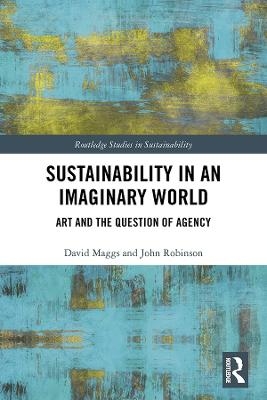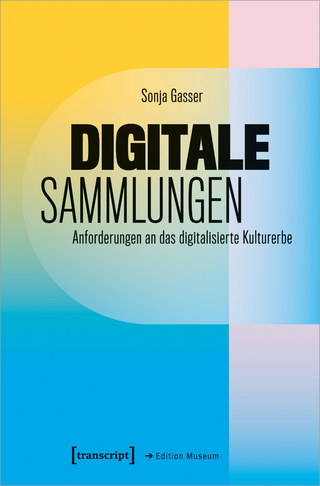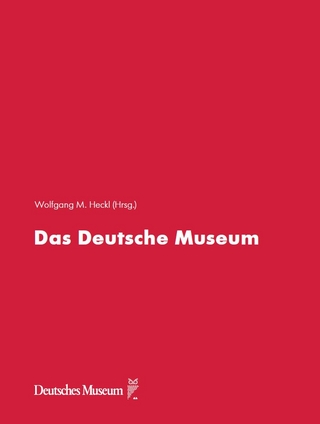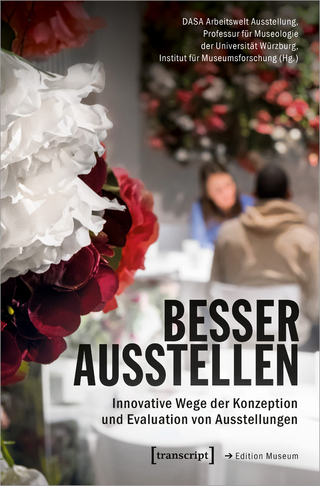
Sustainability in an Imaginary World
Routledge (Verlag)
978-0-367-36515-8 (ISBN)
- Titel z.Zt. nicht lieferbar
- Versandkostenfrei innerhalb Deutschlands
- Auch auf Rechnung
- Verfügbarkeit in der Filiale vor Ort prüfen
- Artikel merken
Over the past decade, interest in art’s agency has ballooned as an increasing number of fields turn to the arts with ever-expanding expectations. Yet just as art is being heralded as a magic bullet of social change, research is beginning to throw cautionary light on such enthusiasm, challenging the linear, prescriptive, instrumental expectations such transdisciplinary interactions often imply. In this, art finds itself at a treacherous crossroads, unable to turn a deaf ear to calls for help from an increasing number of ostensibly non-aesthetic fields, yet in answering such prescriptive urgencies, jeopardizing the very power for which its help was sought in the first place.
This book goes in search of a way forward, proposing a theory of art aiming to preserve the integrity of arts practices within transdisciplinary mandates. This approach is then explored through a series of case studies developed in collaboration with some of Canada’s most prominent artists, including internationally renowned nature poet Don McKay; Italian composer and Head of Vancouver New Music, Giorgio Magnanesi; the renowned Electric Company Theatre, led by Kevin Kerr; and finally through a largescale multimedia installation aiming to reimagine the relationship between climate, culture, and human agency.
Sustainability in an Imaginary World will be of great interest to students and scholars of arts-based research fields, sustainability studies, and environmental humanities.
David Maggs carries on an active career as an interdisciplinary artist and arts-researcher. He is the founder and pianist for Dark by Five (darkbyfive.com), has written works for the stage, and collaborated on large augmented reality projects. David is the artistic director of the rural Canadian interarts festival Gros Morne Summer Music (gmsm.ca), founder and publisher of a digital arts magazine (oldcrowmagazine.com), and the director of The Graham Academy, a youth performing arts training academy. He initiated and co-produced the CBC documentary The Country. As an academic David focuses on arts practices and the challenge of sustainability. His doctoral thesis Artists of the Floating World led to the SSHRC-funded Sustainability in the Imaginary World led by Principal Investigator John Robinson (www.imaginesustainability.today). His research attempts to understand sustainability as a cultural challenge, and to make sense of art as a driver of social impacts. He has been a featured speaker at the Canadian Arts Summit, The International Transdisciplinarity Conference, the National Valuing Nature Conference, The American Association for the Advancement of Science, Swiss Federal Institute of Technology (ETH Zürich), and elsewhere. John Robinson is a Professor at the Munk School of Global Affairs and Public Policy and the School of the Environment at the University of Toronto. He is also an Adjunct Professor at Copenhagen Business School and Visiting Professor at Utrecht University in 2019. At U of T, he is Presidential Advisor on the Environment, Climate Change and Sustainability, and heads up the Sustainable Built Environment Performance Assessment (SBEPA) research network. His research focuses on the intersection of climate change mitigation, adaptation and sustainability; the use of visualization, modelling and citizen engagement to explore sustainable futures; sustainable buildings and urban design; the role of the university in contributing to sustainability; creating partnerships for sustainability with non-academic partners; the history and philosophy of sustainability; and, generally, the intersection of sustainability, social and technological change, ways of thinking, and community engagement processes.
Table of Contents
Section 1: Realigning the art-sustainability relationship
Chapter 1 - An Introduction to Sustainability in an Imaginary World
Section 1 – Realigning the art-sustainability relationship
Section 2 – Artists of the Floating World
Section 3 – Sustainability in an Imaginary World
Summary
Chapter 2 - Sustainability as a failure of ontology
What kind of problem is sustainability?
A problem for Modernism or about Modernism?
The Subjects of Sustainability: Information Deficit Models and the Modernist Problem of Personhood
Social Practice
The objects of sustainability and the rise of complexity
Methodological or Ontological redress?
A banishing of science?
Or Modernity?
Flattening Ontology
Procedural Sustainability
Flipping the Predicate
Regenerative Sustainability
The joyful climate crisis?
Conclusion
Chapter 3 – Art as the Attention we Pay
A risky proposition?
Value-add or Trade-off?
Transformative vs. Co-optive?
Two Cautionary Tales
A descriptive swing and a miss: The Mozart Effect
A prescriptive swing and a miss: Art and science communication
Gauging the risk
Why do we think art has agency and where does this instinct typically lead?
A theory of art for transdisciplinary work?
Instauration and the nature of construction
Beings capable of worrying you?
George Steiner and the ‘Unmastered Thereness’
Heidegger and the ontological agency of art
world/earth tensions
Tools vs. Art
Indirect, Mediated, and Frustrating
The agency of the work of art
Conclusion: Art as the quality of attention we pay
Chapter 4 – Does It Need to be Good to be Useful? Art, Aesthetic Merit, and Research Design
In search of the full promise of artistic agency?
Tackling a ‘meta’ problem
Aesthetic Priorities in Transdisciplinary Art Practices
Leavy’s resolution
Resistance is fertile?
Aligning descriptive and prescriptive orientations
Misappropriation of Voice?
Aesthetic priorities and democracy?
Amateurs, and aesthetic priorities vs. aesthetic merit.
Artists?
Double Entrepreneurship as our Homeric moment?
Section 2: Artists of the Floating World
Chapter 5 –Artists of the Floating World: An Art-Sustainability Commissioning Strategy
Background
Modifying Modernism? Artists of the Floating World
Models of/Models for
A double agent?
Artist selection
Commissioning document
Evaluation
Interviews
Artefact analysis
The risk?
Chapter 6 – A Bard in the Borderlands: The Poetry of Don McKay
Introduction
Poetry in the borderlands
Science or Sentiment?
The Double Agent: metaphors to unmap the world
Earth in our Worlds
Wilderness
Poetic Attention
New works for Artists of the Floating World
The purgatory of trash
Thingamajig or Talking to your stick, boots, and chair
stick
boots
rocking chair
The thing itself
Engaging Thingamajig’s audience
Written feedback: love as the unclasping of objectivity
Student blog: ‘Thingifying’ at home
The perils of ‘listening with language’
Interview 1
Interview 2
Interview 3
Conclusion
Chapter 7 – Faith in a World of our Making? The Perils of Interactive Theatre
Introduction
Modes of Emergence
Collaborative creators: The evolution of a devising company
Where do plays come from?
Immanence, interactivity, and an early need for structure
Emergent interactivity
Freedom and Structure
Collaborative models and the professional artist
Imagining the audience: a historical perspective
Substantive emergence: writing for an audience vs. writing with an audience
Immersive theatre: when the wall came down…
Sleep No More: The paragon of the form
You Are Very Star development process
Substantive emergence: resolving the inkblot-cougar problem
Procedural emergence: pushing collaborative creation to new heights
True experimentation
The normative advantage of emergent process
You Are Very Star (brief synopsis)
Audience response: life beyond the wall
Narrative and character
Audience interactivity
Art of the Floating World?
Chapter 8 - Interactive Music Making: Radical Aesthetics, Radical Politics?
Introduction
A perplexing result
The rise of Musical Modernism
The quest for absolute value
Composer as hero
The emergence of an industry
The imagined audience: social or historical?
The Late Quartets
The origin of value?
Rite of Spring: the paradigm case
The Zero Hour: music post-World War II
Diverging avant-gardes
Similar fates
Our inescapable humanity?
The abdication of Giorgio Magnanensi
An encompassing immanence
Process over product
Interactivity, individuality, democracy
Bold experimentation
Back at the fork in the road
Commissioned work for the GCC: Teatro Dell’udito CIRS
Emergent interactivity or grey-green mush?
Engagement? Interaction? Meaning? Agency?
Emancipating the audience?
Pattern seekers
The right answer to the wrong question?
Back to the fork in the road, only wiser?
Chapter 9 - Making Sense of Artists of the Floating World
Introduction
Development Process
Making sense of the results
Art, Modernism, and Sustainability
Interactivity as a refutation of Modernism
A paradox
A different problem
Aesthetic Priorities
Conclusion
Section 3: Sustainability in the Imaginary World
Chapter 10 - Sustainability in an Imaginary World: The Initial Ideas
Design Elements of SIW
Sustainability as a challenge of ontology
Art as an agent of ontology
Scenarios as a compelling partner?
Digital capacity as an obvious means?
Philosophical indulgence: Policies, Worlds, Axioms
A wheel in a wheel?
A rocket to the moon or worse?
Summary
Chapter 11 – Principles of Transdisciplinary Research as a Template for Arts-Based Research?
Introduction
Principles of Transdisciplinary Practice
The SIW development process
Phase 1: Researchers Alone
Phase 2: Researchers and Artists
Phase 3: Artists and Technicians
Phase 4: Researchers and Audience
SIW and the principles of Transdisciplinary Practice
Conclusion
Chapter 12 – A glimpse into Sustainability in an Imaginary World
General Project Overview
2016 and 2017
2017 Script
What was the point?
Chapter 13 – Making Art in a Digital World – Thoughts on an Unstable Landscape
Introduction
Great Expectations
Art and Interactivity
The Paradox of Interactivity
Ax and the Category of Art
Walton’s Categories of Art
Prescriptive Possibilities?
Conclusion
Chapter 14 – Evaluating Sustainability in an Imaginary World
At the edge of instrumentalization
The worst of both worlds?
Participant Debriefs
The Results
Ambiguity and Embodiment
Mixed reviews
A blessed failure?
Layers of Success
Creating a compelling encounter
Generating deep reflection
Multiple fluid perspectives on sustainability
Inspiring high-quality dialogue
Interactivity and agency
But is it the art?
The problem with our best data
The Problem with our worst data
Adjusting SIW evaluation
Time
Language
Inclusion
Cause or Effect?
Chapter 15 – Hopeful Monster
Introduction
Making sense of hopeful monsters
Crystallization
Emergence
Resonance
Aligning with a dyadic theory of art
Abandoning the mission?
Considering SIW as a hopeful monster
Conclusion
| Erscheinungsdatum | 03.02.2020 |
|---|---|
| Reihe/Serie | Routledge Studies in Sustainability |
| Zusatzinfo | 4 Tables, black and white; 1 Line drawings, color; 2 Line drawings, black and white; 12 Halftones, color; 3 Halftones, black and white |
| Verlagsort | London |
| Sprache | englisch |
| Maße | 156 x 234 mm |
| Gewicht | 650 g |
| Themenwelt | Kunst / Musik / Theater |
| Reisen ► Reiseführer | |
| Geisteswissenschaften ► Geschichte ► Hilfswissenschaften | |
| Naturwissenschaften ► Biologie ► Ökologie / Naturschutz | |
| Technik ► Umwelttechnik / Biotechnologie | |
| Wirtschaft ► Volkswirtschaftslehre | |
| ISBN-10 | 0-367-36515-4 / 0367365154 |
| ISBN-13 | 978-0-367-36515-8 / 9780367365158 |
| Zustand | Neuware |
| Haben Sie eine Frage zum Produkt? |
aus dem Bereich


